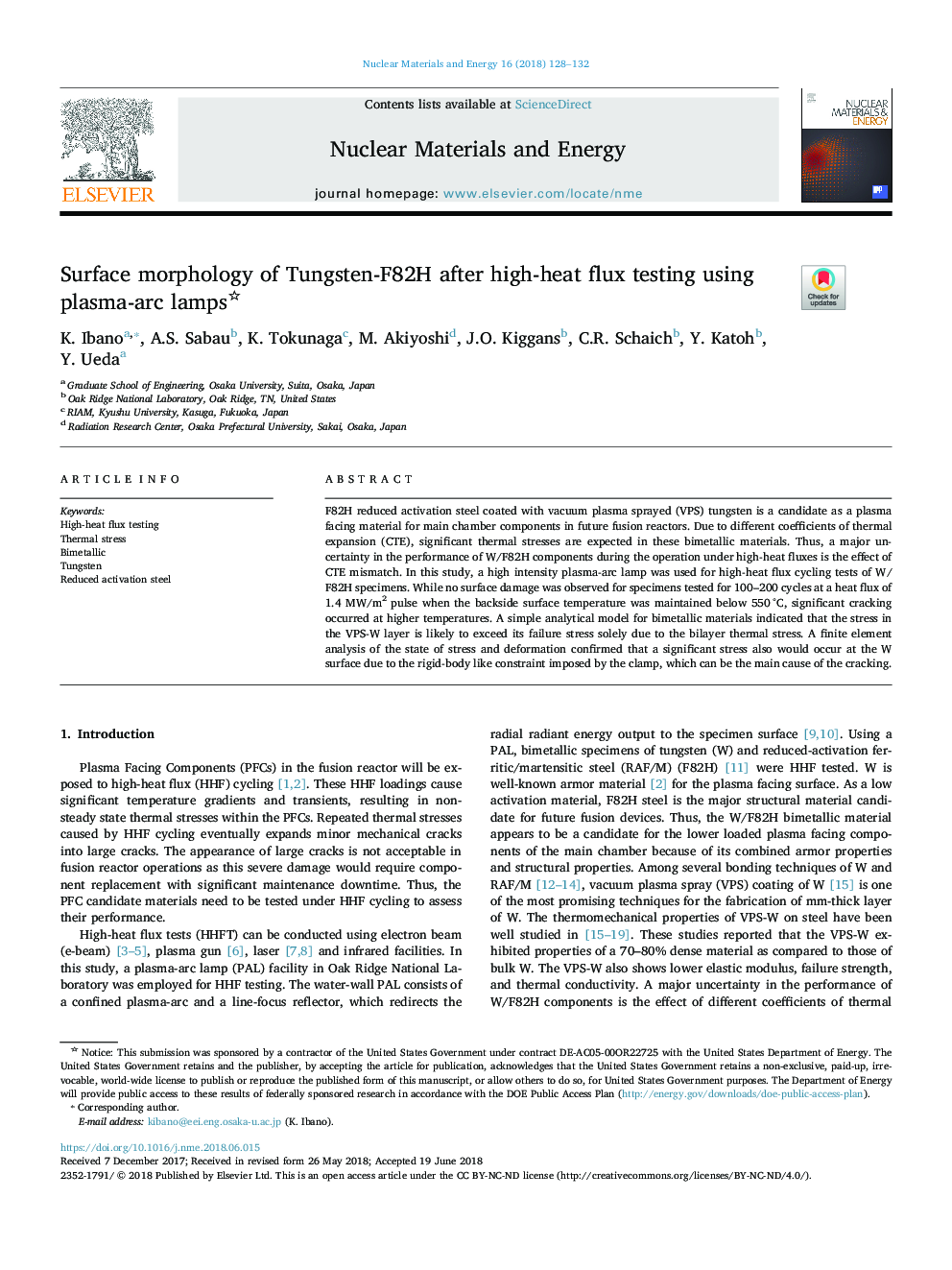| Article ID | Journal | Published Year | Pages | File Type |
|---|---|---|---|---|
| 7987237 | Nuclear Materials and Energy | 2018 | 5 Pages |
Abstract
F82H reduced activation steel coated with vacuum plasma sprayed (VPS) tungsten is a candidate as a plasma facing material for main chamber components in future fusion reactors. Due to different coefficients of thermal expansion (CTE), significant thermal stresses are expected in these bimetallic materials. Thus, a major uncertainty in the performance of W/F82H components during the operation under high-heat fluxes is the effect of CTE mismatch. In this study, a high intensity plasma-arc lamp was used for high-heat flux cycling tests of W/F82H specimens. While no surface damage was observed for specimens tested for 100-200 cycles at a heat flux of 1.4 MW/m2 pulse when the backside surface temperature was maintained below 550â¯Â°C, significant cracking occurred at higher temperatures. A simple analytical model for bimetallic materials indicated that the stress in the VPS-W layer is likely to exceed its failure stress solely due to the bilayer thermal stress. A finite element analysis of the state of stress and deformation confirmed that a significant stress also would occur at the W surface due to the rigid-body like constraint imposed by the clamp, which can be the main cause of the cracking.
Related Topics
Physical Sciences and Engineering
Energy
Nuclear Energy and Engineering
Authors
K. Ibano, A.S. Sabau, K. Tokunaga, M. Akiyoshi, J.O. Kiggans, C.R. Schaich, Y. Katoh, Y. Ueda,
